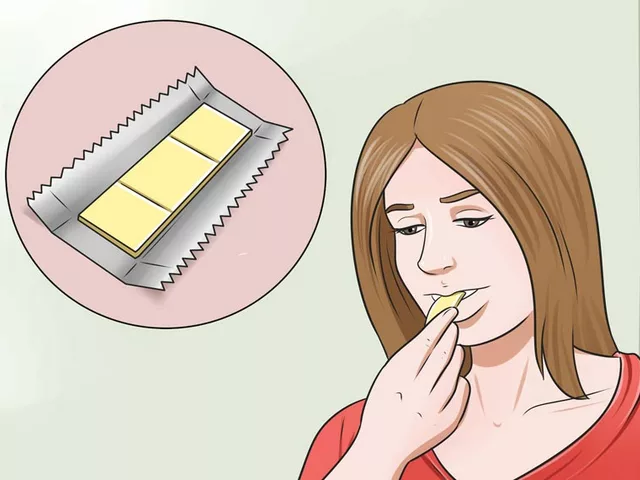Before 2012, waiting for a generic drug to hit the market could take years. Backlogs piled up. Applications sat untouched. Patients waited longer for cheaper alternatives to brand-name medicines. Then came the Generic Drug User Fee Amendments - or GDUFA - a law that changed everything.
What GDUFA Actually Does
GDUFA isn’t a regulation. It’s a funding deal. Congress gave the FDA permission to collect fees from generic drug makers - not as a tax, but as a way to pay for faster reviews. Before GDUFA, the FDA relied only on taxpayer money to review thousands of applications for generic drugs. That wasn’t enough. By 2012, there were over 1,100 applications stuck in limbo. Some had been waiting more than five years. The law, signed by President Obama in July 2012, let the FDA charge companies for things like submitting an Abbreviated New Drug Application (ANDA), registering manufacturing sites, and updating drug files. In return, the FDA promised to meet clear deadlines: review most ANDAs within 10 months, and inspect high-risk facilities within specific timeframes. This wasn’t just about money - it was about accountability.Who Pays and How Much
Generic drug companies pay fees based on what they make and where. There are two main types: facility fees and application fees. For a U.S.-based factory making finished pills - like a tablet or capsule - the fee under GDUFA III (2023-2027) is $175,389 per year. If that same factory is in India, China, or another country, it pays $190,389. That $15,000 difference? It covers the higher cost of sending FDA inspectors overseas. The same applies to factories making the active ingredient - the chemical that actually works in the drug. Domestic API facilities pay $26,458; foreign ones pay $41,458. There’s also a one-time fee for each ANDA submitted - around $175,000 - and another for each Drug Master File (DMF) referenced in the application. These fees aren’t optional. If you want your generic drug approved in the U.S., you pay.Why GDUFA Changed the Game
Before GDUFA, the FDA reviewed about 100 generic drug applications a year. By 2017, after GDUFA I, that number jumped to over 1,000. The backlog dropped from over 1,100 pending applications to under 100. Review times fell from an average of 36 months to under 10 months for most applications. That’s not just a number. It means patients got access to cheaper versions of drugs like insulin, blood pressure pills, and antibiotics much faster. In 2023, generic drugs made up 90% of all prescriptions filled in the U.S. GDUFA helped make that possible. The law also forced transparency. The FDA now publishes monthly and quarterly reports showing exactly how many applications are reviewed, how many inspections are done, and where delays happen. That level of public tracking didn’t exist before.
How GDUFA Evolved - From GDUFA I to GDUFA III
GDUFA isn’t permanent. It renews every five years. Each version fixes problems from the last. GDUFA I (2013-2017) got the job done but created new issues. Big companies with dozens of products could spread the annual facility fees across many drugs. Smaller startups? They paid the same fee for one or two applications. That made it harder for new players to enter the market. GDUFA II (2018-2022) tried to fix that. It introduced fee reductions for small businesses and added more flexibility for companies submitting multiple applications. It also improved how the FDA handled inspections and communication. GDUFA III (2023-2027) went further. It created the Pre-ANDA Program - a way for companies to meet with FDA scientists before even filing an application. This helps avoid costly mistakes early on. It also introduced the ANDA Assessment Program, which gives companies feedback on whether their application is likely to be approved before they pay the full fee. These aren’t just bureaucratic tweaks. They’re real tools that save time and money for manufacturers - and speed up patient access.Who’s Been Impacted the Most
Large generic drug makers like Teva, Mylan, and Sandoz benefit from GDUFA’s predictability. They have teams of regulatory experts, legal departments, and compliance software to handle the fees and paperwork. But smaller companies and new entrants still struggle. The annual facility fee is a fixed cost. Even if you’re making just one generic drug, you pay the same as a giant. Some small firms have shut down or sold out because they couldn’t afford the burden. Foreign manufacturers - especially in India and China - also feel the pinch. Over 70% of U.S. generic drug manufacturing happens overseas. The $15,000 premium for foreign facilities is controversial. Critics say it doesn’t reflect actual inspection costs. The FDA says it covers travel, logistics, and language barriers. The debate continues.What’s Next? GDUFA IV and Beyond
GDUFA III expires in September 2027. Negotiations for GDUFA IV are already starting. Industry groups and the FDA are discussing new ideas:- Lower fees for small businesses with fewer than five products
- More digital submissions - no more paper forms
- Streamlined reviews for complex generics, like inhalers or injectables
- Better tracking of drug quality after approval
How Manufacturers Stay Compliant
If you’re a generic drug maker, here’s what you need to do:- Register all manufacturing sites - domestic and foreign - with the FDA every year.
- Pay the correct fees on time. Late payments delay your application.
- Use the FDA’s online fee calculator to avoid mistakes.
- Submit your ANDA with all required documents - including DMFs and labeling.
- Respond quickly to FDA questions. Delays in replies push back your approval clock.
Why This Matters to You
You might never hear about GDUFA. But if you’ve ever filled a prescription for a generic drug - and most people have - you’ve benefited from it. A 30-day supply of generic lisinopril costs $4. The brand version? Over $100. That savings exists because GDUFA helped get the generic approved quickly and reliably. It’s not perfect. Small companies still struggle. Foreign manufacturers complain about fees. But the system works. More generics. Faster approvals. Lower prices. That’s the goal. The next reauthorization will decide if GDUFA keeps improving - or if it gets stuck in the same old problems. For now, it remains the most important law supporting generic drug access in the U.S.What is GDUFA and why was it created?
GDUFA stands for Generic Drug User Fee Amendments. It was created in 2012 to fix a massive backlog of generic drug applications at the FDA. Before GDUFA, it could take years to approve a generic drug. The law lets the FDA collect fees from drug manufacturers to fund faster reviews, inspections, and staff - ensuring patients get safe, affordable generics sooner.
How much do generic drug companies pay under GDUFA?
Under GDUFA III (2023-2027), a U.S. facility making finished drugs pays $175,389 annually. Foreign facilities pay $190,389. Active ingredient facilities pay $26,458 domestically and $41,458 overseas. There’s also a one-time $175,000 fee for each ANDA application. These fees fund FDA review and inspection activities.
Does GDUFA only benefit big drug companies?
Initially, yes - the fixed annual fees favored large companies with many products. But GDUFA II and III introduced changes to help smaller firms, like reduced fees for new entrants and the Pre-ANDA Program, which lets them get early feedback. Still, the cost remains a barrier for very small companies with just one or two drugs.
Why do foreign manufacturers pay more?
Foreign facilities pay $15,000 more for both finished drug and active ingredient sites because inspections overseas cost more - travel, translators, logistics, and time. The FDA says this covers the real expenses. Critics argue the difference is too high and doesn’t match actual costs, especially since most U.S. generic drugs come from abroad.
When does GDUFA III expire, and what’s next?
GDUFA III expires on September 30, 2027. Negotiations for GDUFA IV are already underway. Potential changes include lower fees for small businesses, digital-only submissions, and faster reviews for complex generics like inhalers and injectables. Congress must pass new legislation to continue the program.





Ravi boy
November 19, 2025 AT 10:48Matthew Karrs
November 20, 2025 AT 11:14Matthew Peters
November 21, 2025 AT 13:55Liam Strachan
November 22, 2025 AT 05:23Gerald Cheruiyot
November 23, 2025 AT 12:02Michael Fessler
November 24, 2025 AT 12:46daniel lopez
November 25, 2025 AT 19:37Matthew Peters
November 25, 2025 AT 20:55